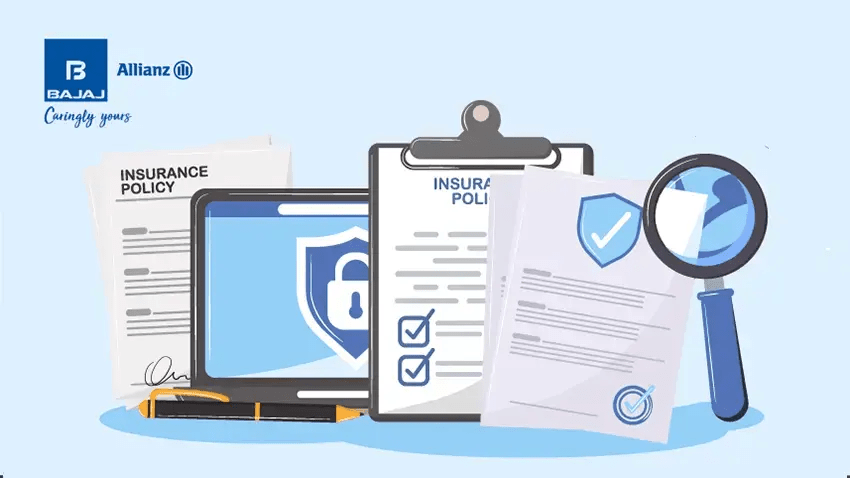Bike insurance is a must-have financial safeguard to cover any losses due to damages and collisions. Moreover, it is mandatory in nature and thereby all two-wheeler owners need to invest in a bike insurance plan. There are essentially two types of policies that can be bought, a
third party bike insurance that is mandatory in nature, or a comprehensive policy that can be bought as an optional upgrade. Both these plans have different coverages helping you stay free of financial as well as mental stress due to accidents and repairs. But it often happens that people buy and forget about the insurance plan. Since this policy is valid for a limited duration, ensuring its timely renewal is important.
There are certain documents that are required for its renewal. They are mentioned on the policy document or on the insurance company’s website. These depend on whether the renewal is with the same insurance company or there is a change of the insurer. Except a few documents, they are more or less similar. This article elaborates on the different documents that are required at the time of two-wheeler insurance renewal.
Documents Required for Renewal with the Same Insurer
- Previous Policy Document: A copy of your existing bike insurance policy to provide details of the current coverage.
- Vehicle Registration Certificate (RC): To verify the ownership and registration details of your vehicle.
- Insurance Renewal Notice: Some insurers provide a renewal notice, which includes essential details like premium amount and policy terms.
- Proof of No Claim Bonus (NCB): If applicable, documents confirming any discounts you may be eligible for due to a claim-free year.
- Pollution Under Control (PUC) Certificate: Required for legal compliance and ensuring the vehicle’s environmental standards.
- Identification Proof: A government-issued ID to verify the identity of the policyholder.
Documents Required for Renewing Your Policy with a Different Insurance Company
- Previous Policy Document: A copy of your existing two-wheeler insurance policy to ensure continuity of coverage.
- Vehicle Registration Certificate (RC): To confirm the ownership and registration details of your vehicle.
- Pollution Under Control (PUC) Certificate: Proof that your vehicle complies with environmental norms.
- Claim History Report: If you have had claims with your previous insurer, you may need a report that outlines your claim history.
- No Claim Bonus (NCB) Certificate: If you are eligible for an NCB, this certificate will help you avail of discounts on your premium.
- Identification Proof: A government-issued ID to verify the identity of the policyholder.
- Address Proof: Required for confirming your current address.
Documents Required for Renewal of a Lapsed Insurance Policy
- Lapsed Policy Document: A copy of the expired insurance policy to verify the details of your previous coverage.
- Vehicle Registration Certificate (RC): Proof of ownership and registration of the two-wheeler.
- Pollution Under Control (PUC) Certificate: An updated PUC certificate that proves your bike meets environmental norms.
- Inspection Report: If the policy has lapsed for a long time, the insurer may require an inspection of the vehicle to assess its condition.
- Identity Proof: Government-issued photo ID (e.g., Aadhaar, Passport) to verify the policyholder's identity.
- Address Proof: A document (like a utility bill or bank statement) to confirm your current address.
- Claim History Report (if applicable): A record of any claims filed under your previous policy.
Also Read:
Things in Mind to Secure Online Bike Insurance Renewal
Things to Remember Before Bike Insurance Renewal
Before renewing your bike insurance, there are several important things to keep in mind to ensure you're adequately covered and save on premiums. Here are the key factors to consider:
1. Review Coverage
Evaluate your existing coverage. Ensure that it meets your current needs, including any upgrades or new accessories.
2. Compare Premiums
Get quotes from different insurers to compare premiums and coverage options. Sometimes switching providers can result in better rates.
3. No Claim Bonus (NCB)
If you have a claim-free year, ask your insurer about the
No Claim Bonus, which could lower your premium.
4. Check Add-ons
Consider adding coverage for things like roadside assistance, engine protection, or consumables if they align with your needs.
5. Policy Lapse
Ensure that your policy doesn't lapse to avoid a break in coverage or higher renewal premiums.
6. Update Personal Details
Verify that your contact details, address, and other personal information are up-to-date.
7. Check Insured Declared Value (IDV)
Make sure the
IDV reflects the current market value of your bike, as this impacts claim settlements.
8. Examine Exclusions
Review the exclusions in your policy to avoid surprises in case of a claim.
9. Additional Discounts
Inquire about any discounts that may be available, such as for being a safe rider or installing anti-theft devices.
Also Read:
Renewal Process for Two-Wheeler Insurance
Conclusion
With the above documents at-hand, it is smooth renewal procedure. However, if any additional documents that those mentioned above shall be required will be specified by your insurance company. Insurance is the subject matter of solicitation. For more details on benefits, exclusions, limitations, terms and conditions, please read sales brochure/policy wording carefully before concluding a sale.
 Service Chat:
Service Chat: 

